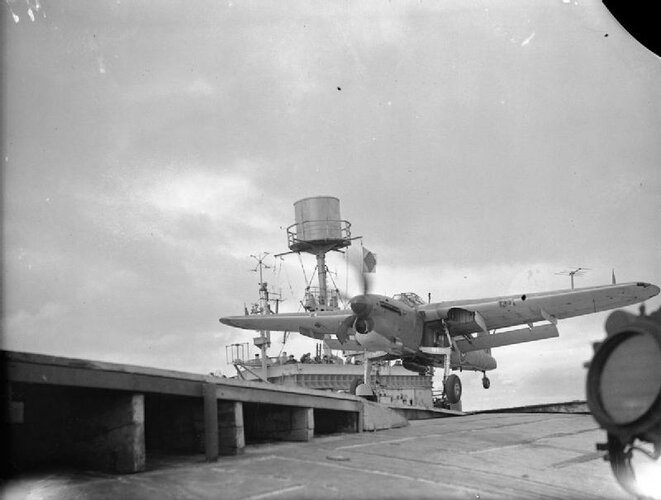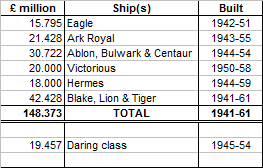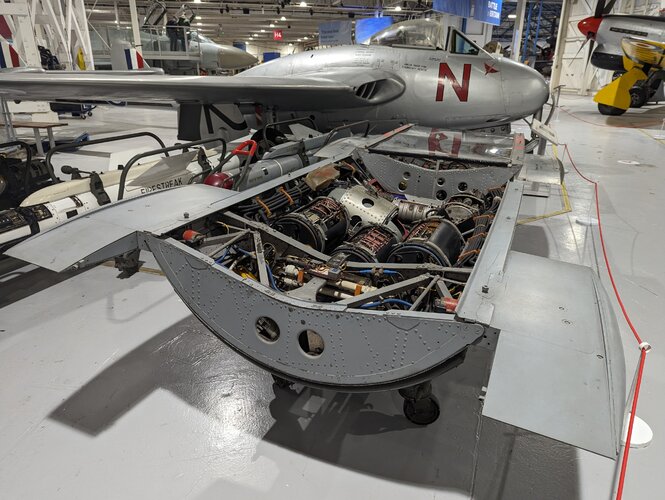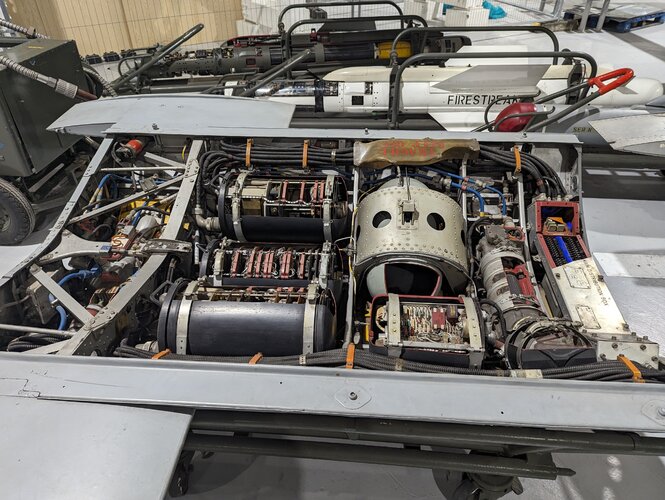115ft to 115.5ft BWL is a figure to ensure drydocking at Gladstone drydock.
Davenport N.10 (a merger of two drydocks) allows for 815ft LWL and 118ft BWL, assuming the flight deck overhangs the dock's 855ft Length.
Edited in Additional:-
During the earlier Malta process, the then limitation of Davenport N.10 implied a carrier of
765ft LBP
820ft LWL
845ft LFD
The 114ft BWL version was 45,000tons deep load and had 190,000shp as per a number of Malta studies.
The later 1952 effort using the lines of Eagle came to LFD of 865ft, with a 815ft LWL hull. Again these studies worked on 190,000shp in the tropics.
The 118ft BWL option is from the 1970 sketch designs for CVA-01 at 50,000tons.
Yes and the question you asked was.
1. Slip availability. They must be appropriate size and dates?
According to Jane's 1940
Cammell Laird, Birkenhead
6 slips, longest 1,000ft
6 smaller slips
John Brown, Clydebank, Glasgow
5 slips 1000ft to 600ft
3 slips 600ft to 450ft
Denny, Dumbarton
Building ways up to 400ft
Thornycroft, Wooslton, Southampton
Vessels up to 400ft.
Fairfield, Govan, Glasgow
6 slips to built ships up to 1,000ft.
Harland & Wolff, Belfast
19 slips, no other details.
However, there must have been one slip longer than
Hawthorn Leslie, Hebburn-on-Tyne
9 slips up to 735ft.
Scotts', Greenock
Slips for 8 large vessels
Stephen, Linthouse, Govan, Glasgow
Builds cruisers, destroyers, & torpedo craft, no other details.
Swan Hunter, Wallsend
16 building berths up to 900ft.
Vickers-Armstrong, Barrow, 13 building berths of.
800ft
750ft
680ft
2 x 620ft
2 x 580ft
2 x 550ft
530ft
500ft
410ft
380ft
Vickers-Armstrong, High Walker, Newcastle-upon-Tyne, 10 building berths of.
1,000ft
900ft
800ft
2 x 600ft
5 from 450ft to 550ft.
White, Cowes, Isle of Wight
Vessels up to 400ft in length.
Yarrow, Scotstoun, Glasgow
6 building berths up to 400ft in length.
The dimensions of the 1952 Aircraft Carrier were 815ft x 115ft which means that the following yards had at least one slipway long enough to build one on.
Cammell Laird
John Brown, Clydebank
Fairfield, Govan
Harland & Wolff, Belfast
Swan Hunter, Wallsend
Vickers-Armstrong, Newcastle-upon-Tyne, which we know had two.
However, as you've mentioned dry docks, in my initial reply I wrote.
According to Friedman the waterline dimensions of the 1952 Aircraft Carrier were 815ft x 115ft and the corresponding dimensions of Malta Design X1 were 850ft x 115½ft so the UK must have had at least 4 slipways that were long enough. Plus the Luftwaffe's "slum clearance" of 1940-41 may have allowed some of the shorter slipways to be extended between 1945 and 1950.
IIRC Plymouth and Portsmouth were heavily bombed during the war. There might be vacant land that the dry docks in at HM Dockyards Devonport and Portsmouth can be extended into. If labour's a problem maybe the British Government can keep some of its Axis prisoners for longer to do the work and say that it's war reparations.





